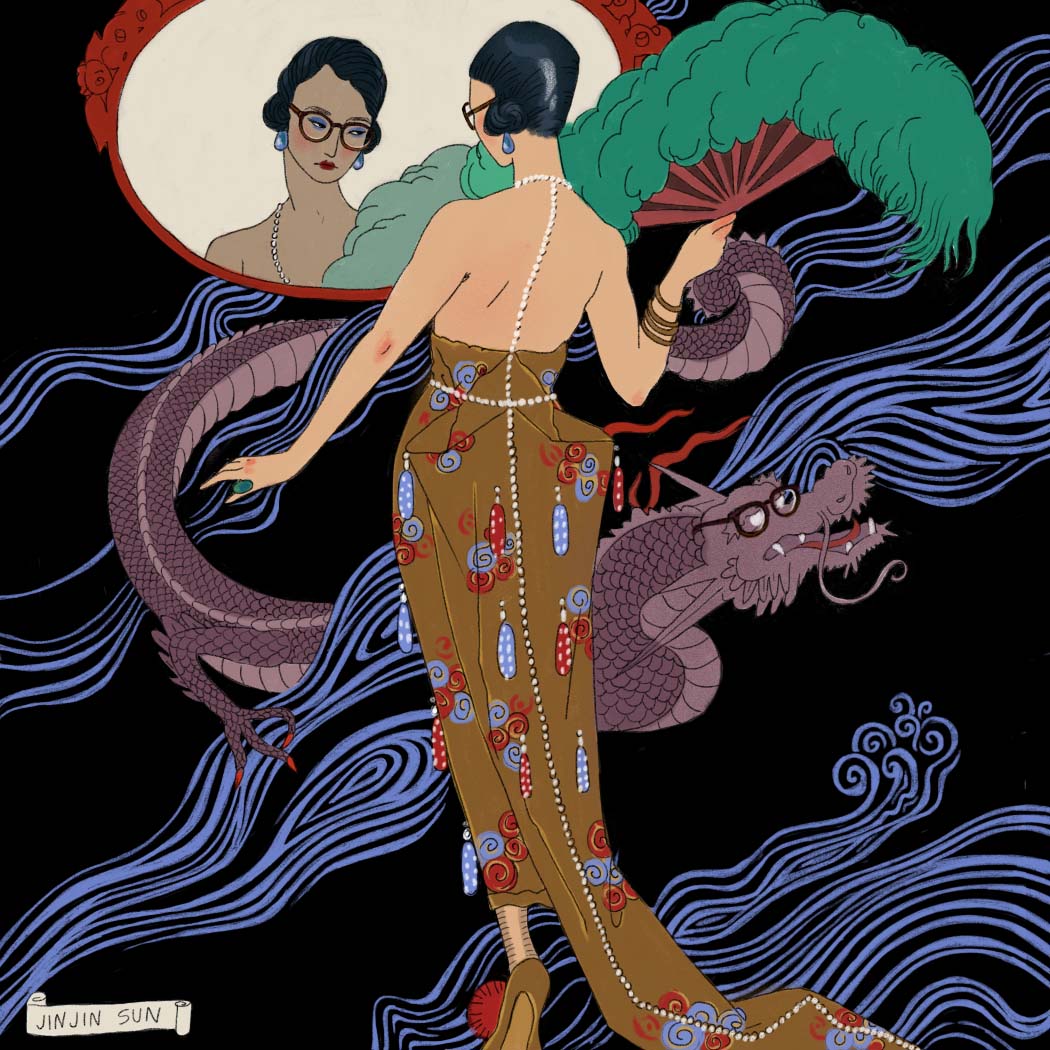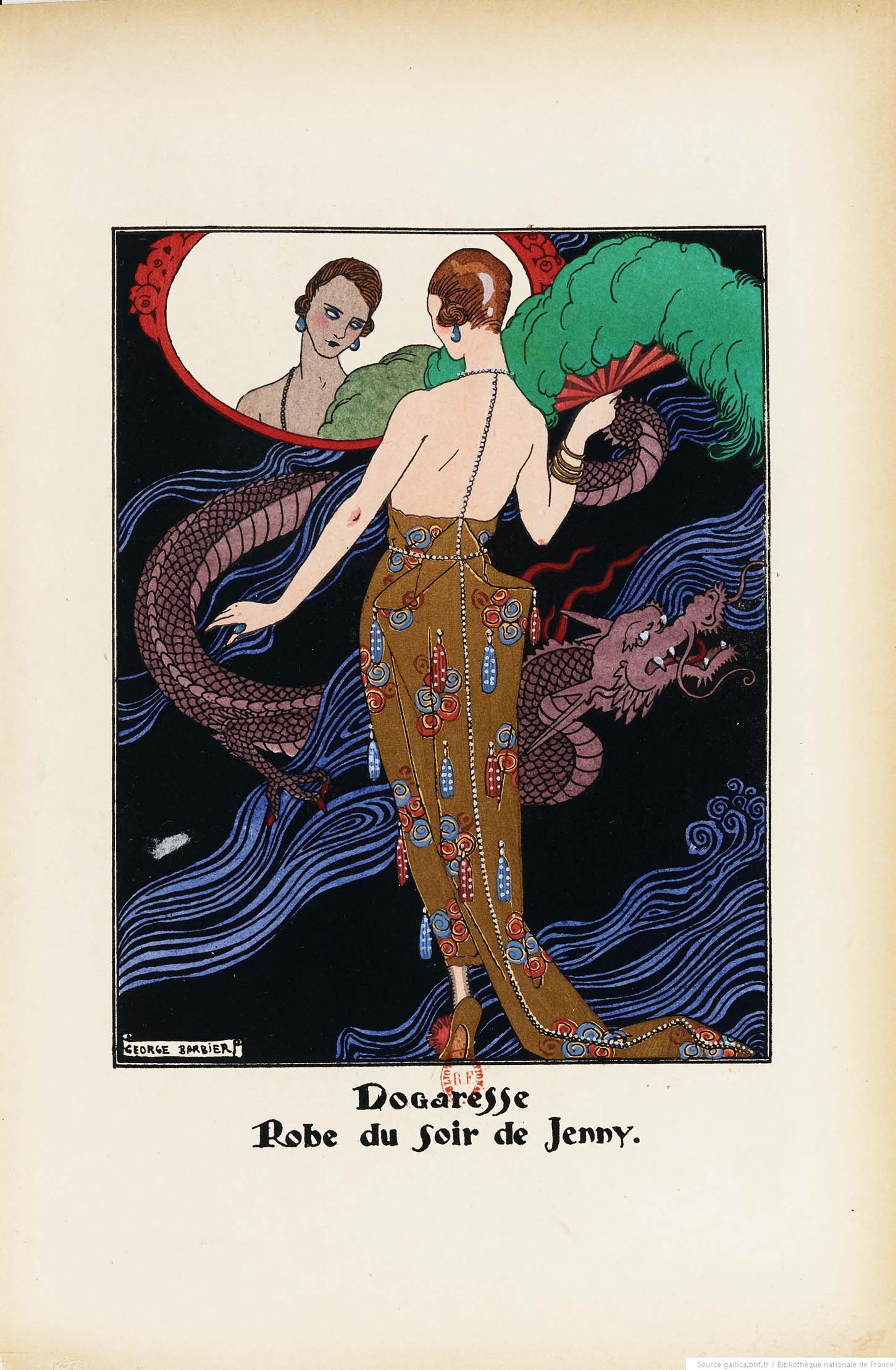69/100
Dogaresse
-
Artist
George Barbier
-
Year
1919
-
Culture
French
-
Date of Copy
I thought this fashion plate was beautiful, but also very explicitly Orientalist. (I recognized that a lot faster for this entry than the previous one.) This is due to the dragon in the background. I was a little annoyed by that clearly East Asian element used to make a white lady seem more exotic, and decided to reclaim it by putting myself into this artwork. As someone who's Chinese by heritage, I felt I had more right to use this dragon than the European artist did, and that putting my East Asian face in this scene would be a good correction. That is what I thought of as empowering at the time. Plus, I could put glasses on the dragon, which would be funny--always a plus!
I have a confused relationship with Orientalism and cultural appropriation in art and fashion. Part of me gets so excited whenever I see elements of my culture celebrated and highlighted as beautiful, because I'm so not used to it. The other part is put off by the inaccuracies and lack of context for why those elements are being used. It's also weird to see an aesthetic celebrated without showcasing the people who created it. But despite myself, I often see art like this as beautiful and the shallow representation better than nothing. Maybe that's how growing up as a minority has warped my mind. Or maybe that's the awkward, human consequence of any kind of cross-cultural pollination. Hopefully we can make progress away from these cringey dynamics by actually increasing representation of non-White voices in Western society.
This is another one by George Barbier, whose work I do enjoy and previously copied in entry 64. He was a product of his time.
Reference from Gallica, the French National Library.

